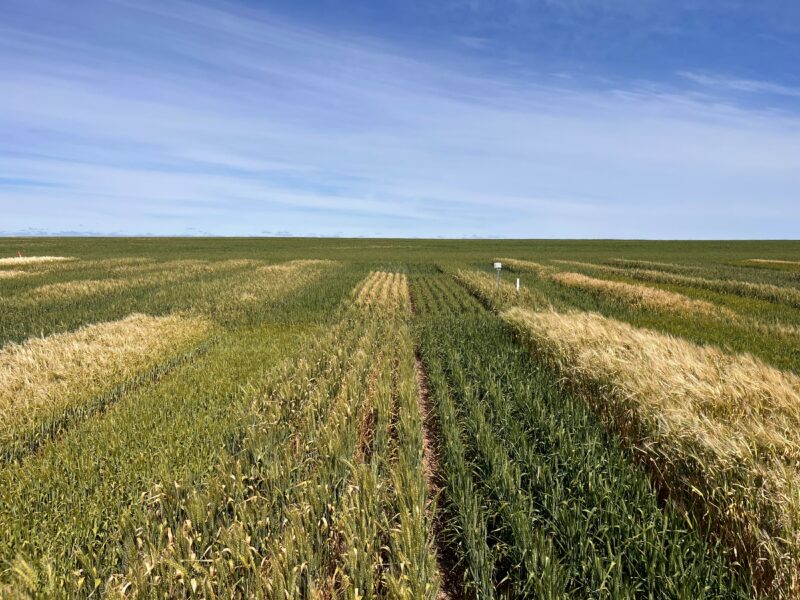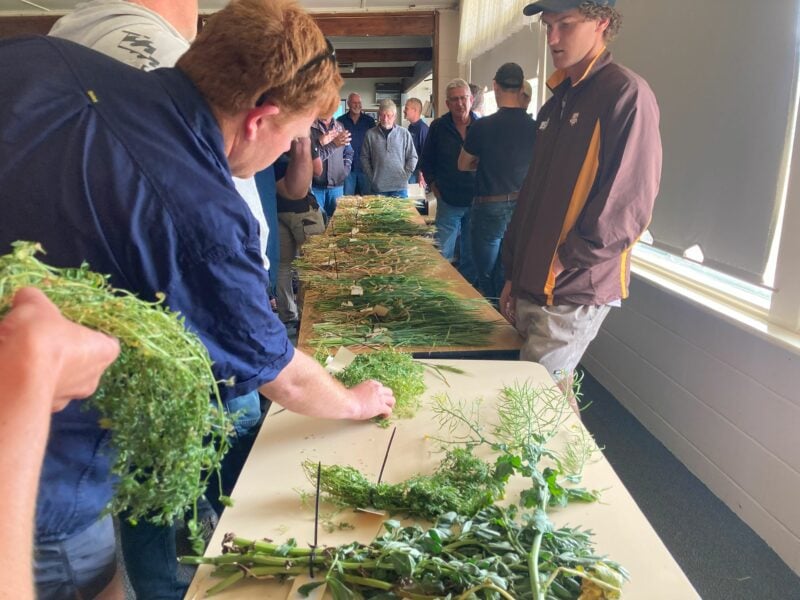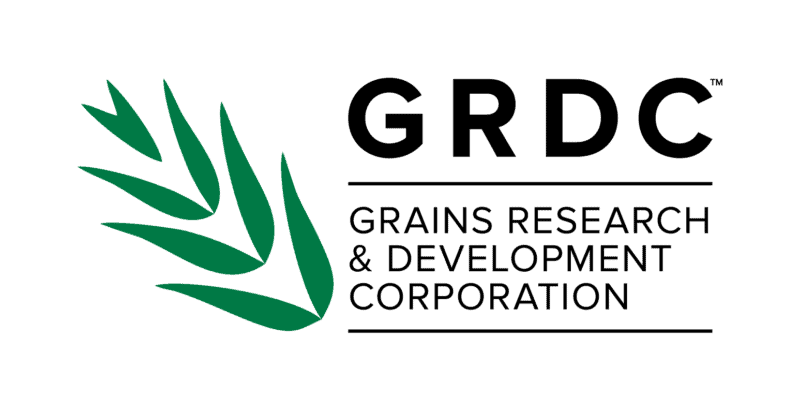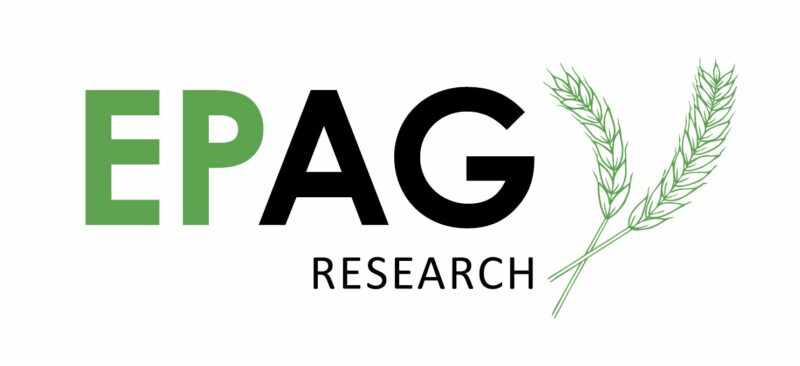Frost information session at Lock
About 60 people attended the ‘pop-up’ event held at Lock on Wednesday 24 September, to discuss possible options for frosted crops, hosted by Andrew Ware of EPAG Research.

Above: Frost trial site at Tooligie, 23 September 2024.
Andrew presented some of the temperature data collected at the GRDC funded frost trial site near Hincks Conservation Park. There were four frost events (to -5 degrees C) that occurred after ear emergence for Scepter wheat in mid-September.

Above: Temperatures recorded at the Tooligie high frost risk zone trial site, 2024.
Andrew then provided a summary of the results from previous frost work on EP (you can access the final report here with all the information on the project webpage).
In summary:
- With frost events occurring from June to October, finding a variety with the ability to dodge frost events by either flowering earlier or later is incredibly difficult. However, some promise with quick winter varieties such as Mowhawk (limited seed available in SA) was demonstrated.
- Barley proved far more capable of returning higher yields than wheat when planted in high frost risk areas.
- Growing mixtures of varieties with differing maturity couldn’t demonstrate an advantage over growing a single, best adapted variety.
- None of the nutritional or ice nucleating products evaluated were able to produce a yield response beyond the correction of established nutritional deficiencies.
- Soil amelioration on sandy soils was able to demonstrate warmer canopy temperatures, reducing the risk of frost.
- The project was able to demonstrate the value of understanding areas where high frost risk regularly occurs, so that differing management strategies can be implemented in those areas to either reduce costs or yield loss.
Consultants Michael Hind, Bates Ag Consulting and Josh Hollitt, Hollitt Consulting provided an overview of what they are seeing in client paddocks, highlighting that you need to wait 5-7 days after a frost event before making an assessment of damage. They provided an overview of what they are currently seeing in paddocks, and options going forward.
What are we seeing at the moment?
- Damage to heads is only occurring if heads were exposed – those that were still covered by the leaf sheath have avoided the impacts recent frosts. To test, squeeze the grain – clear fluid is good.
- Tipping of heads is due to water stress, not frost.
- Heads that are lime green in colour are frosted.
- Lentils sown in ‘red zones’ (areas of the paddock that are frosted in 3 out of 5 years) are toast.
- Some damage in faba beans.
- Canola has seen some damage, but where it is still flowering it might be okay.
- Wheat has seen the biggest variability in impacts.
- Impacts are greatest on the lighter soils.
They suggested installing tiny tags or other temperature data loggers are a good way of knowing what has happened on farm.
The EPAG Research team provided a range of samples from the trial site with varying degrees of frost damage that people could inspect.

What are the options?
For cereals, cutting for hay might be the difference between getting your input costs back (prices for hay currently around $280-$400/t). If you are prepared / have capacity to store properly (covered or in a shed) until March, prices generally increase. Make sure you test the quality, as higher quality hay can attract a premium. Also check withholding periods if considering export hay.
Other things to consider are equipment availability. Windrowing with the header is an option – it can take 5 weeks to dry out.
Demand for hay will increase if conditions remain dry. Pastures have started to run out of puff and livestock producers may need to fill feed gaps between now and harvest (if not already). Above all, understand the value of your hay and make sure you get paid!
Canola can make good hay if leaf matter is still present, probably skip the lentils if there’s minimal biomass. It does make good quality hay however, and only do it if they are completely smoked – there’s still some time for recovery for lentils (pending some rain).
Josh Hollitt ran through a quick gross margin calculation to determine what the break-even grain yield would be required compared to hay gross margins. A calculator produced by the NSW Department of Primary Industries can be accessed on the AIR EP website frost project page.
Make sure any green is sprayed out to conserve moisture for next season.
Check out the fact sheet: Hay vs silage production for the Eyre Peninsula for sampling techniques, sample volumes and labs for quality testing.
What to consider now and planning for 2025
- Look after yourself and your neighbour’s mental health – check in every now and then, you don’t need to provide answers, just a sympathetic ear.
- Understand your situation – you can make better decisions with more accurate information, or seek a second opinion if you are struggling with making a decision.
- Identify your frost zones – the ‘red zone’ will be areas that are frosted 3-4 years out of 5 (where your yield maps dip down to less than 0.5 t/ha), the ‘yellow zone’ 1 out of 5 years and the ‘green zone’ has never been frosted.
Crop types in red zones:
- Barley sown early
- Oats might have a fit
- Canola maybe, if so, use an open pollinated variety
- Legumes (faba beans, woolly pod vetch, lupins)
- Plant health is critical, so avoid sowing wheat on wheat in yellow/red zones.
- Review your zones now.
- Change management practices to suit zones.
- Planning is critical and Sept/Oct is the best time to do this.
At the conclusion of the session, Andrew Ware thanked Michael Hind for his contributions to agriculture on EP as he heads into ‘retirement’. His support for research and development, and his service to clients has been highly valued and will be sorely missed.

Above: Michael Hind, Bates Ag Consulting, presenting on options for frosted crops.
This event was made possible by the AIR EP led GRDC funded project ‘Further tactics to minimise frost damage on the Eyre Peninsula’, project code AIP2404-001RTX. Thanks to Andrew Ware, the EPAG Research team, Michael Hind and Josh Hollitt for pulling this event together.


